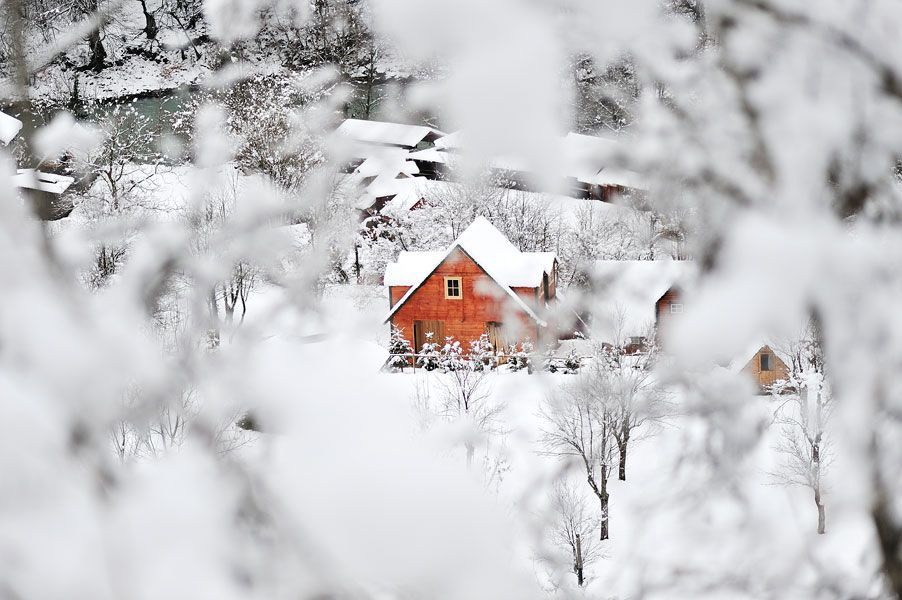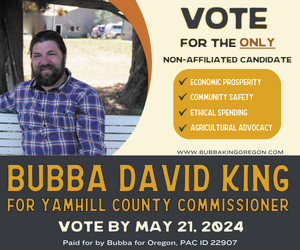Traveling the world one conversation at a time

During my first December in McMinnville, in 1978, a Saturday stretched ahead of me. My Linfield College roommate was on the way to Portland, along with several other residents of Grover Hall, so I was alone.
My reading and other homework were finished. So I decided to spend my free time exploring McMinnville on foot.
As I left campus and headed north on Baker Street, past the hospital, now site of Walgreens, and Goodwill, now site of St. Vincent de Paul, snow began to fall. I hadn’t seen much snow in my entire life, as I’d grown up on the coast, so I was charmed.
I continued past the Baptist Church on my right and the empty lot, where the fire station now stands, on my left. Then I turned onto Third Street and paused to admire Boersma’s display windows, which were almost as beautiful then as they are today.
I stopped into Rutherford’s Ben Franklin, Thrifty Drug, Western Auto, a hobby shop, Wheyside Cheese and other stores as I made my way down the street.
Turning around at Stan’s Market, the little grocery at Third and Galloway, I was awed by the scene. Lighted swag stretched across Third Street, block after block, framing the colorfully decorated City Park tree at the west end, all decorated in snow.
“What a beautiful place this is,” I thought for the first time, but hardly the last.
More than 40 years later, McMinnville still sparkles for me. But now it’s the people I value, rather than the scenery. And I’m fortunate that, through my job, I meet more local residents each week.
During the holiday season, I learn about the wide variety of people who’ve chosen to live here, including some from other countries. For them, too, the decorations on Third Street and the first snowfall of the year may trigger memories and forge new experiences.
I love to see how different we are — and how alike, as well.
This is the 19th year I’ve written our annual Holiday Traditions series, which examines the way people from other places celebrate Christmas and other special days.
The series has taken me on a trip around the world: To Europe, Asia, Africa, South America, Canada and several South Sea islands ... to places where a white Christmas isn’t just a dream and locations where residents take a dip in the ocean before barbecuing their Christmas dinner outside.
It’s taken me back in time, as well, to the days of the Great Depression, World War II and the periods of struggling to rebuild from the devastation of war.
It’s taken me places where the celebrations differ from those here only because the accents are different; to places where Christmas is an entirely secular event; and to places where Christmas was banned by Communist regimes, yet celebrated anyway by devout Christians.
This year, the “Holiday Traditions” series includes an artist from Russia, a swimming coach from Brazil, a first-generation American who grew up celebrating his Norwegian heritage, an affordable housing advocate from Mexico, and one more person, who will have to remain a surprise for now.
For most people I’ve interviewed, the mention of Christmas, New Year’s and other winter holidays evokes a smile. Even if they didn’t have much most of the year, they fondly recall the special fish or fowl served for Christmas dinner, and the gifts, small but meaningful, they found in their stockings.
They remember the evocative Christmas music. Many have, in fact, lived the details of popular songs.
Although they may have dashed through the snow in cars, rather than sleighs, they remember actual chestnuts roasting on an open fire or silver bells ringing on city sidewalks.
They love the decorations associated with the holidays — the Advent calendars, the wreaths, the trees. Some have recalled real candles on the branches; others the trains that circled their family tree’s base or the special angel that always commanded pride of place at the top.
In Germany and some other countries, children didn’t see the tree until Christmas Eve. They would be kept out of the living room for a few hours while their parents whispered as they decorated. When they were allowed back in, they would gasp at the beautiful, sparkling tree.
For many families, especially those who lived in predominantly Catholic countries, the most important decoration was the nativity scene. Some families set up the manger, animals and Mary and Joseph figurines in the Christmas season, but waited until midnight Christmas Eve to add Baby Jesus.
Of course, not everyone views Dec. 25 as a special day; their religions and cultures mark other treasured holidays.
Yamhill County residents of the Jewish faith mark Hanukkah, or Chanukah, instead. This year, the eight days of Hanukkah last from Dec. 23 to 30, but sometimes the holiday starts in late November or early December.
Each evening, families use a central candle, called a shammash, to light one of the eight other candles in the menorah, until all are burning. Hanukkah dinners include oily food, celebrating the miracle that caused one day’s worth of oil to provide light for eight days.
And local county residents who come from India, for instance, celebrate Diwali, the Hindu festival of lights.
The five-day holiday in November symbolizes “victory of light over darkness, good over evil, and knowledge over ignorance.” Who doesn’t want to celebrate that?









Comments